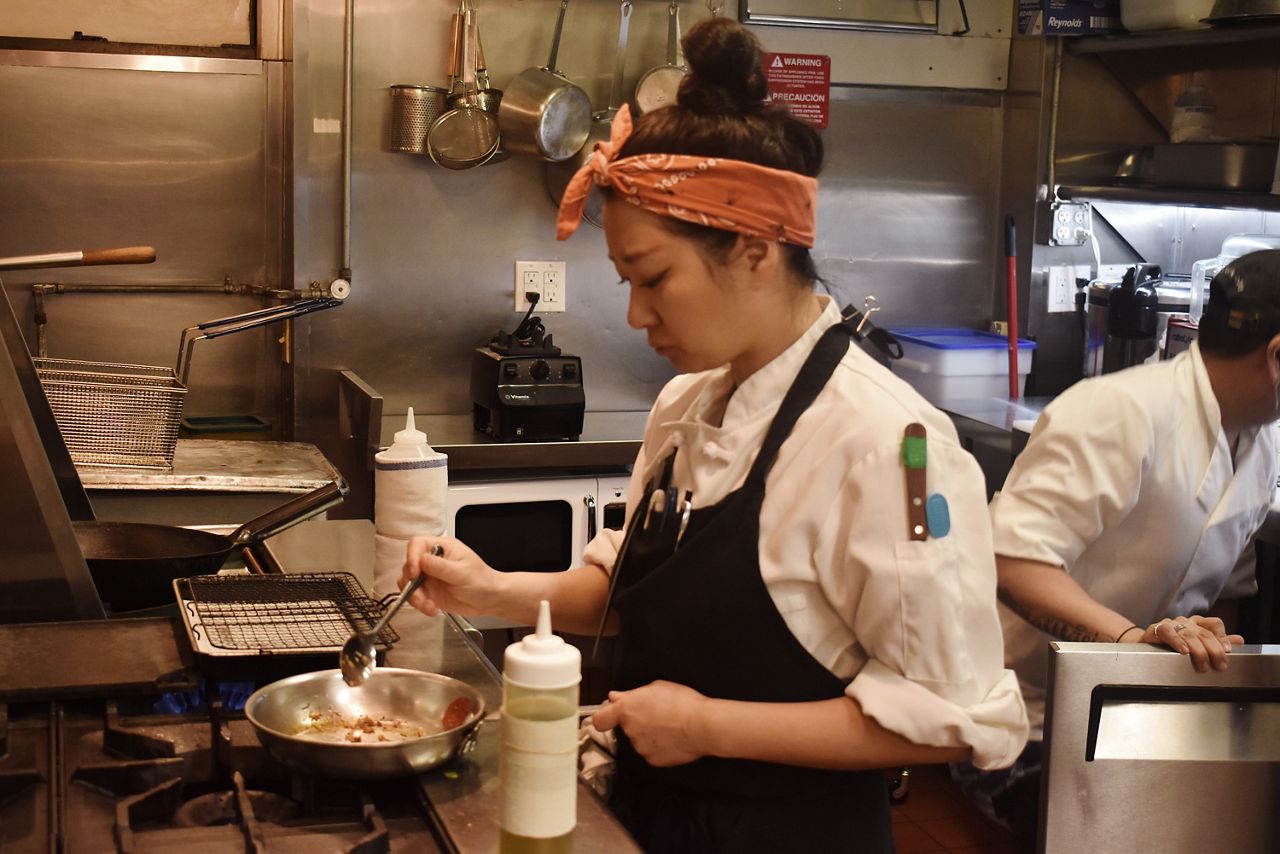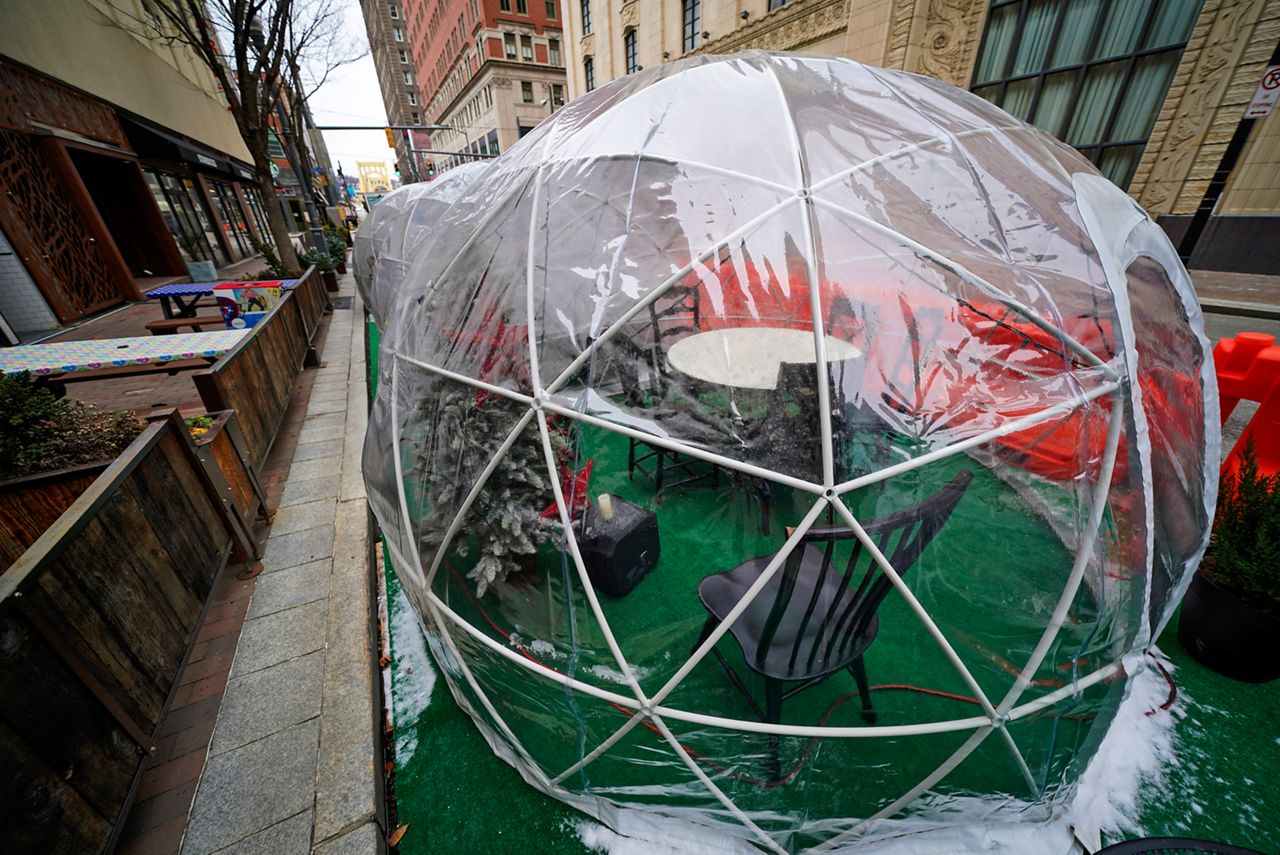It has been a year since the COVID-19 pandemic began to shut down cities across the United States in earnest, forcing Americans into their homes to mitigate the spread of the deadly virus. In foregoing traditional activities, many began to take up new hobbies, increasingly turning to digital spaces to stave away quarantine boredom.
Across numerous social platforms, a common thread emerged: Food.
Since March of last year, Americans have spent more time than ever in their kitchens. According to a report from the Food Industry Association conducted in April of last year, 40% of American adults said they were cooking more than in previous years due to the pandemic.
A separate study conducted by OnePoll in partnership with frozen food purveyor Farm Rich found that of the 2,000 people surveyed, over 90% of respondents said their social media searches for food-related content has increased dramatically amid the pandemic.
It wasn’t long before food fads began to emerge, with many gaining traction on the popular video-sharing app TikTok. A search for the hashtag #procrastibaking (a combination of the words “procrastination” and “baking,” which took off during the pandemic) reveals over 3.2 million views for the topic alone. A similar search for the hashtag #quaribake (the combination of “quarantine” and “bake”) has over 1 million views, with some of the top videos highlighting a series of creative twists on traditional baking recipes.
“When I think of this past year, I think of one thing, and it’s TikTok,” Jake Cohen, food media writer and author of the cookbook “Jew-Ish” told Spectrum News. “The way we're eating, the way we are being influenced on what to make for dinner, what to bake — all of it comes down to what's being shared. Because we can't physically be with people, we can't have word of mouth, we need to be finding it somewhere.”
It’s this desire for community, Cohen added, that led to the phenomenon of what he refers to as “FOMO-baking,” a play on the acronym for “fear of missing out.” When people see their friends branching out and trying new things on social media, it’s only natural to want to try and replicate it.
For many people, that connection began with a surge in bread making recipes — most specifically, sourdough — being shared across social media.
“At the beginning of the pandemic, I think of sourdough bread, I think of banana bread,” Cohen said. “When you start to see everyone else (making a recipe), since we can't physically be with each other, it becomes this kind of connector where everyone feels a little bit more connected if they're all making the same thing.”
There is more than anecdotal evidence to support sourdough’s meteoric rise in popularity amid the pandemic. According to Google’s annual trend report, sourdough bread was its most-searched-for recipe of 2020; healthy banana bread came in at tenth on the same list.
This “FOMO-baking” had real-world impacts on the supply chain as well. At King Arthur Baking Company, one of the nation’s largest flour producers, sales increased by around 600% in the month of March alone, before plateauing at around a 300% increase in April. At the same time, calls to the company’s Baker’s Hotline — a phone number manned by culinary staff who field calls from the public about baking — surged to record heights, the company told Eater.
Many of those callers were seeking advice on how to bake sourdough from home.
Beyond the desire for shared experiences, the act of cooking and baking can also offer concrete benefits. Julie Ohana, a culinary art therapist in Michigan, bases her career on the idea that “cooking can be therapeutic, and it's not just therapeutic in the sense of clinical counseling.”
“We all have to eat,” Ohana observed in an interview with Spectrum News. “So hopefully, most of us are also cooking. And if it's something we have to do, you might as well do it, and enjoy it, and really get something out of it for yourself."
Cooking in general offers a plethora of personal benefits, Ohana says; it can provide entertainment when there are otherwise limited options; gives both beginning and new chefs an opportunity to engage in creative problem-solving, and allows for people to express emotion through acts of service.
“I think we all are in a place through this last year where … we've had to look for other ways to take care of ourselves, to find entertainment to make ourselves feel better,” Ohana says of why so many Americans have taken to their kitchens.
Ohana also noted the spike in amateur sourdough-makers at the beginning of the pandemic, and believes baking offers a slightly more specific therapeutic benefit as people largely remain indoors.
“It’s different than just whipping up a batch of cookies or brownies, or scrambled eggs for breakfast,” Ohana says of baking. “Baking bread is much more of a process, and it takes time and it takes patience.”
“There's something so fulfilling about, at the end of that process, look what you have, look what you've created,” she added. “In a time where everybody is feeling at a loss for control, it allows for control and knowing what's going to be ... if you can know you created something.”
While the rise in quarantine baking came as a surprise to some, it was not such a shock for food historians. The human connection with bread dates back to prehistory, writes Science History Institute research curator Elisabeth Drago in her article “Stress Baking and the Comfort of Connection,” positing that it is perhaps “the breaking of bread, the sharing and nourishing, that touches us most deeply.”
The act of baking — a time-consuming process that requires precision and attention — is less readily available to the modern person than in previous times. One does not need to understand the chemical reactions created in food when ordering take-out, Drago maintains, and baking connects people both with one another and with centuries-old traditions.
“Amid uncertainty, cooking for yourself or your loved ones creates tangible results; and with more time spent in our own kitchens, the slow processes of rising, proofing, and maintaining dough “starters” can become pleasurable exercises in mindfulness, keeping our thoughts in the present moment,” Drago writes.
The uptick in at-home baking and cooking was not the only way our relationship with food changed over the past year.
As cities and states across the country implemented varying degrees of coronavirus lockdowns, the dining and service industry was among the hardest-hit, with the National Restaurant Association (NRA) calling 2020 “the most challenging year for the restaurant industry” to date.
According to the NRA’s 2021 State of the Industry Report, over 110,000 restaurants were either closed for long-term time spans or permanently by the end of last year; at the height of pandemic lockdowns last April, nearly 8 million employees in the food and beverage industry were either laid off or furloughed due to the closures.
Many restaurants made the pivot to takeout-focused menus, with over half of restaurants surveyed by the NRA saying they devoted more resources to expanding off-premises options since the beginning of the COVID-19 outbreak than the same time the previous year. Each of the six major restaurant segments included in the study — family dining, casual dining, fine dining, quick service, fast-casual, and coffee/snack providers — reported off-premises dining made up a larger proportion of sales than in pre-pandemic times.
But as dining locations changed, so did the appetites of customers, an increased strain on the already-burdened restaurants.
Such was the experience of Chef Kyungmin “Kay” Hyun, who opened her second New York City restaurant, Mokyo, in November of 2019, only a few months before the first case of COVID-19 was detected in the United States.
Mokyo was designed to be a more intimate, personal dine-in experience with visually appealing plates — a hard atmosphere to come by as restaurants in the city were only sporadically allowed to host indoor dining services over the course of the past year.

It was already hard enough appealing to New Yorker’s palates, Chef Kay told Spectrum News in December of last year, in a city whose thousands of restaurants expose residents to a vast array of cultures and foods. But the pandemic challenged her to learn more about the desires of take-out customers in order to keep her restaurant afloat.
In the last few months of 2020, Kay began to recognize that delivery orders were coming from “a different kind of customer,” one who valued being full over the visual presentation of food.
And so Mokyo’s menu underwent an unplanned revamp, with dishes that included raw meat or fish pushed to the side. The new menu offerings, like Kay’s in-house menu, are Korean-Spanish fusion style, but slightly heavier than a typical in-house Mokyo dish.
“On one of my menus I have gumbo, that's kind of Asian-fusion with a Cajun style and Gochujang, which is a Korean chili-pepper paste,” Kay said. The gumbo “includes plantains instead of potatoes. So plantain, it fills you up, it's filling, it's a protein, plantain. It's warm and then soupy so it makes customers happy when they order gumbo.”
Even when dining restrictions in New York City were temporarily lifted (and later re-implemented, and subsequently lifted again) to allow for limited outdoor seating, Mokyo wasn’t able to take full advantage of the space in front of their restaurant: A large fire hydrant takes over much of the already-limited public sidewalk.

For restaurants better positioned to switch to outdoor dining services, unpredictable weather still posed an issue. Eager diners in colder-weather cities could be seen eating in quasi-outdoor structures, with some restaurants assembling plastic igloos, setting up heat lamps, or even building wooden structures on the sidewalks.
As COVID vaccinations across the country begin to ramp up, there appears to be hope on the horizon for a potential return to a semi-normal, pre-pandemic life — with some experts questioning if the virus has irreversibly changed how Americans interact with food.
The shift to takeout as opposed to in-person dining was a trend already well underway before the onset of the pandemic, according to NRA data. In February of last year, 63% of people getting their food at restaurants were consuming it elsewhere. By the third quarter of last year, the number had jumped to 90%.
But as for the uptick in cooking as a source of comfort? That remains to be seen.
“The next interesting question is really going to be, God willing, when this pandemic comes to an end — will people keep up with these traditions and these activities?” Ohana wonders. “Will they still, I hope, look to them to bring comfort and joy into their lives? I think that'll be the next chapter that we'll all have to kind of stay tuned for.”



